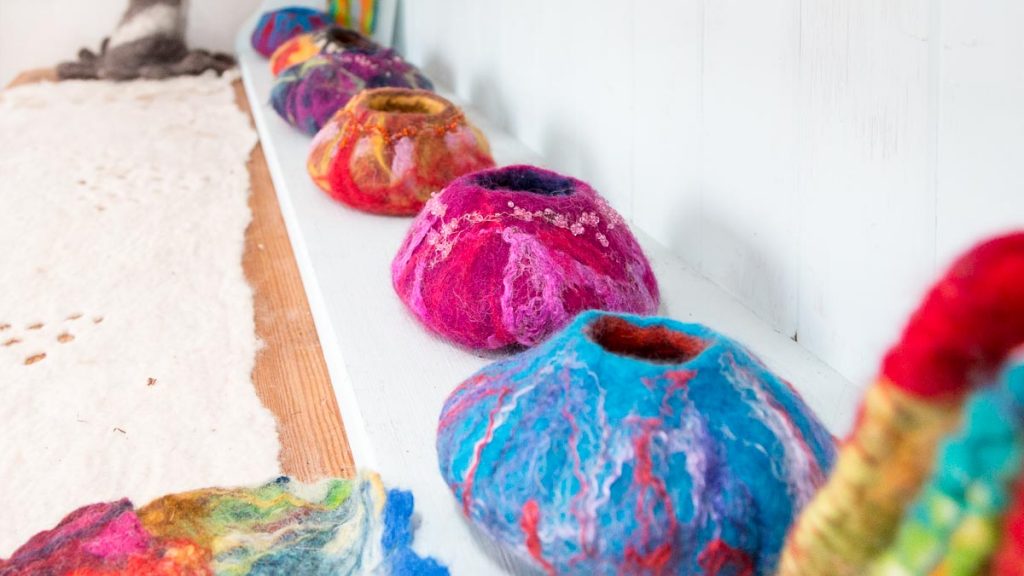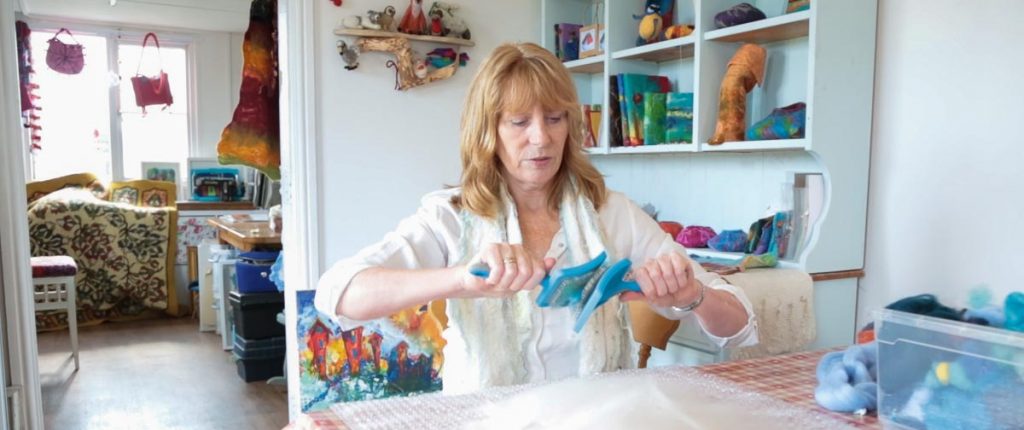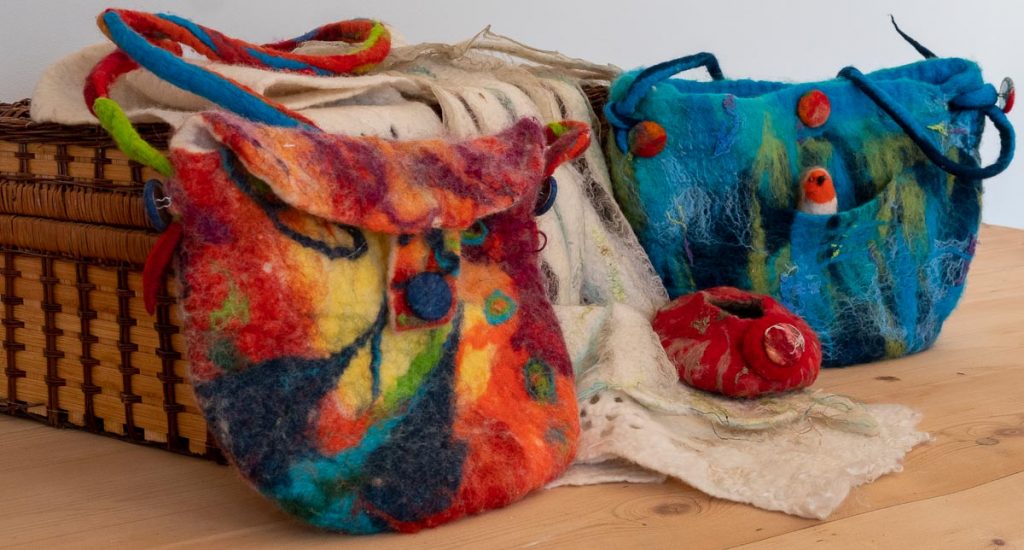Wool In Many Colours

Have you ever looked at the variety of different breeds of sheep in the fields as you drive or walk by? But more to the point the colour of them? what colour comes to mind? The chances are you will picture a white woolly creature gambolling about in the sunshine like the one above. You may also remember seeing the odd black lamb as well, but in England we see mainly shades of white sheep with the occassional brown or black
As a feltmaker I use mostly dyed fleece in my work because this is what makes me buzz, see my bowls below. But some artists prefer the natural look and wouldn’t touch colour.
Dyes add to the range of colours
So how do you get from that natural palette to the colours you find in a many felted pieces of art or clothing? No prizes for guessing dyes of course.
Dyes can be natural or synthetic. Natural dyes derived from various plant material can give a range of rich colours. Add to that the great variety of colours from synthetic dyes and the colour palette available to the modern felt maker becomes quite extensive.

Felt making is an absorbing and creative art, and like a traditional artist who mixes his paint colour palette you can also mix and blend fleece to create any number of colours. Incorporating a variety of breeds and other fibre within the work is very exciting.
Mixing the colours
To mix different wool colours you need to card the fibres. Carding aligns the wool fibres ready for applying to the piece you are making. Carding is done with paddles covered with lots of small pins – a bit like the brush you might use to groom a dog. As seen here, dog brushes work well for carding.

By repeatedly pulling the wool between two carding paddles, the wool fibres become aligned. And if you start with three different colours, carding will blend the coloured fibres to give a beautiful blend of colours. For example, white and blue carded together will give a paler blue. This is an ideal way to represent skies if you are making a wet felted picture but I would also add other colour within this. I take inspiration from nature but also from looking at artists who inspire me.
If you would like to try your hand at feltmaking. You do not need a huge amount of colours to start feltmaking, just two blues, two yellows, two reds and black and white are good bases to start with. From these you can achieve a good range with the blending technique you will create many variations of colours. This is ideal if you are starting with felt making, as it avoids spending a fortune when you start.

To see what you can make from fluffy woolly felted fibres. Browse the Feltworld Gallery page, for inspiration to get started and consider a felt making kit and online tuition all available in my Feltworld Shop. Felt making is a creative art and creativity is good for the soul. Felted items can be wearable or to adorn the home and I love creating both.
If you would like to know more about the beginners level of Feltmaking do take a look at the above links.
Happy felting
Barbara
